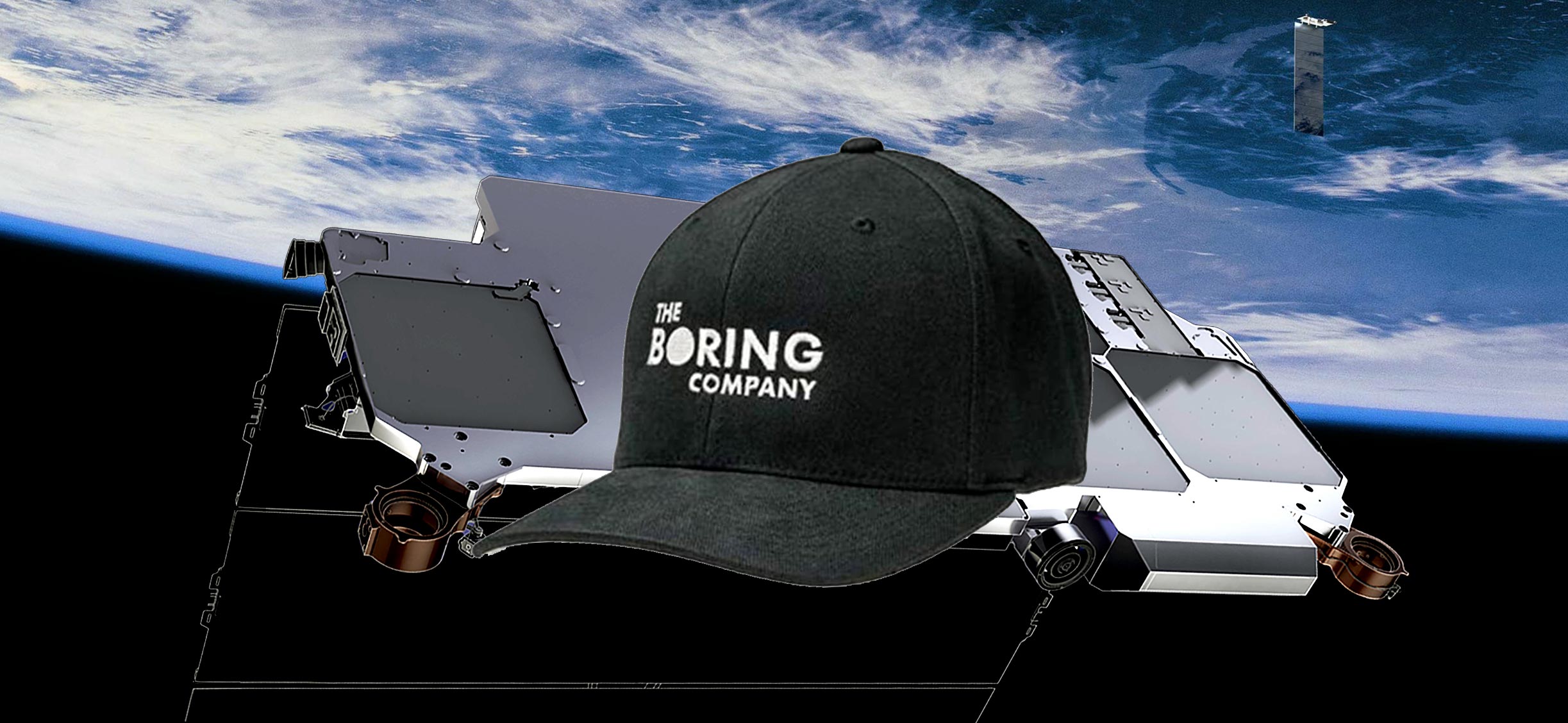
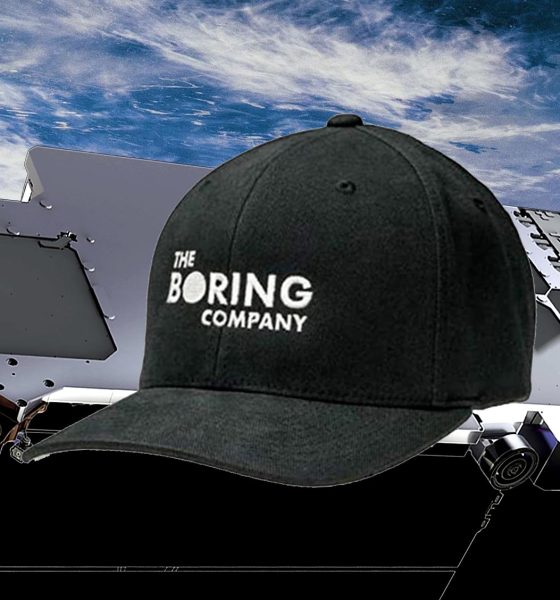
News
SpaceX’s Starlink “VisorSat” launch plans revealed by Elon Musk
CEO Elon Musk has revealed more details about SpaceX’s plans to build and launch upgraded “VisorSat” Starlink satellites, part of the company’s work to ensure that the internet constellation can coexist with astronomy.
Back on April 22nd, Musk gave us the best glimpse yet of what he previously described as a sort of deployable sunshade for Starlink satellites. Designed to prevent orbital sunlight from reflecting off of each spacecraft’s shiny surfaces and disrupting ground-based astronomical observations, the SpaceX CEO said that the company’s very next Starlink launch – scheduled no earlier than “early May” – will carry one or several satellites with said sunshade installed, playfully nicknamed “VisorSat”.
Ultimately, Musk explained in significant detail the likely culprit of the spectacular visibility of Starlink satellites from the ground, discussed plans to reduce or wholly remove that flaring, and explicitly stated that SpaceX will do everything in its power to prevent its constellation from impacting science.
On April 22nd, Musk revealed that the sunshade he’d previously discussed would look “a lot like a car sun visor” and would be built out of dark, radio-transparent foam to avoid disrupting each satellite’s antennas while still preventing sunlight from reflecting off of their mirror-like surfaces.
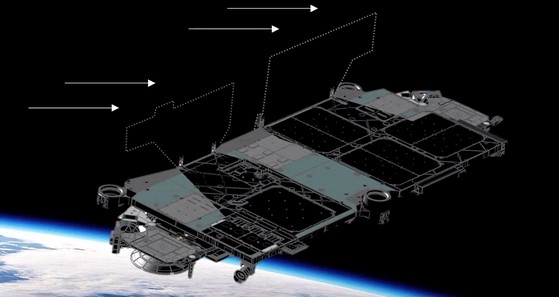
Days later, he revealed a rough render of VisorSat’s design, showing an extremely simple pair of rotating foam ‘visors’ explicitly shaped to block sunlight from Starlink satellite antennas and not much else. Given the use of foam and a deployment mechanism no more complex than four actuating hinges, it’s entirely believable that this solution – if it works – could be cheap and light enough to be almost irrelevant for the overall spacecraft.
If it works, SpaceX’s ad hoc visor would effectively be the best possible solution for brightness, fully solving the issue while having a near-zero impact on the cost or functionality of each internet satellite. Of course, SpaceX will do what it’s known for and flight-test the new VisorSat design before getting ahead of itself, but if those tests are successful, it would be unsurprising if every future Starlink satellite features a visor.
However, in the process of explaining why Starlink satellites can appear so bright, Musk also hinted at one of the reasons that a visor alone cannot fully solve all of the sources of Starlink’s ground astronomy impact. After launch, Starlink satellites must raise and circularize their orbits to reach an operational altitude, a process that has typically taken 2-4 weeks. During that orbit-raising phase, Musk revealed that Starlink satellites must orient themselves in such a way that the entirety of their front and rear faces – including the solar array – is angled perfectly to reflect sunlight back to Earth.
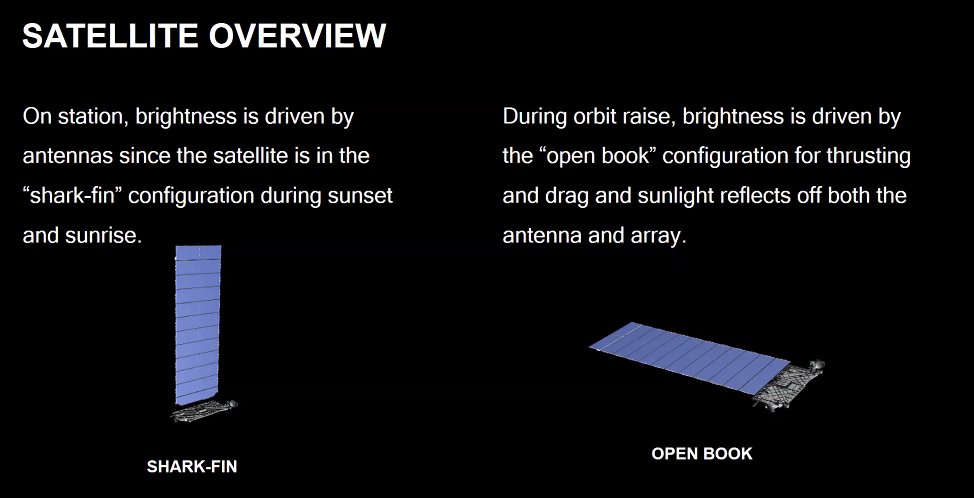
To alleviate that issue, Musk has said that SpaceX will tweak the orientation and operation of satellites during the orbit raising period, but it’s difficult to see a way to consistently prevent bright reflections without big changes. If SpaceX can’t immediately find a way around that “Open Book” orientation, there will likely be anywhere from 60-180+ Starlink satellites raising their orbits on any given day if the company truly plans to operate a constellation of ~4400 satellites, let alone ~12,000 or ~40,000.
Once orbit-raising is complete, Musk believes that visors will effectively make Starlink satellites invisible to the naked eye, but more work will have to be done if SpaceX wants to fully mitigate Starlink’s astronomy impact.

News
Ford cancels all-electric F-150 Lightning, announces $19.5 billion in charges
“Rather than spending billions more on large EVs that now have no path to profitability, we are allocating that money into higher returning areas, more trucks and van hybrids, extended range electric vehicles, affordable EVs, and entirely new opportunities like energy storage.”
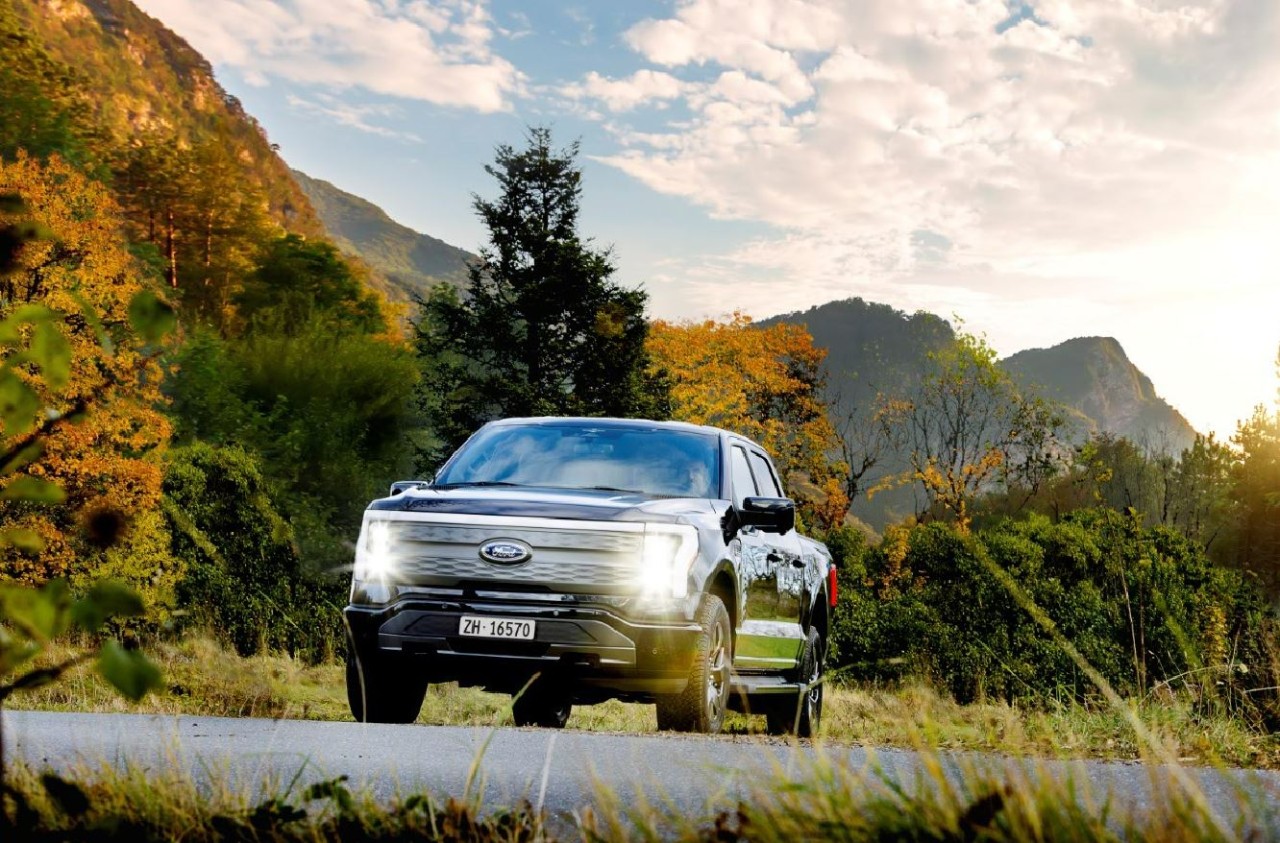
Ford is canceling the all-electric F-150 Lightning and also announced it would take a $19.5 billion charge as it aims to quickly restructure its strategy regarding electrification efforts, a massive blow for the Detroit-based company that was once one of the most gung-ho on transitioning to EVs.
The announcement comes as the writing on the wall seemed to get bolder and more identifiable. Ford was bleeding money in EVs and, although it had a lot of success with the all-electric Lightning, it is aiming to push its efforts elsewhere.
It will also restructure its entire strategy on EVs, and the Lightning is not the only vehicle getting the boot. The T3 pickup, a long-awaited vehicle that was developed in part of a skunkworks program, is also no longer in the company’s plans.
Instead of continuing on with its large EVs, it will now shift its focus to hybrids and “extended-range EVs,” which will have an onboard gasoline engine to increase traveling distance, according to the Wall Street Journal.
“Ford no longer plans to produce select larger electric vehicles where the business case has eroded due to lower-than-expected demand, high costs, and regulatory changes,” the company said in a statement.
🚨 Ford has announced it is discontinuing production of the F-150 Lightning, as it plans to report a charge of $19.5 billion in special items.
The Lightning will still be produced, but instead with a gas generator that will give it over 700 miles of range.
“Ford no longer… pic.twitter.com/ZttZ66SDHL
— TESLARATI (@Teslarati) December 15, 2025
While unfortunate, especially because the Lightning was a fantastic electric truck, Ford is ultimately a business, and a business needs to make money.
Ford has lost $13 billion on its EV business since 2023, and company executives are more than aware that they gave it plenty of time to flourish.
Andrew Frick, President of Ford, said:
“Rather than spending billions more on large EVs that now have no path to profitability, we are allocating that money into higher returning areas, more trucks and van hybrids, extended range electric vehicles, affordable EVs, and entirely new opportunities like energy storage.”
CEO Jim Farley also commented on the decision:
“Instead of plowing billions into the future knowing these large EVs will never make money, we are pivoting.”
Farley also said that the company now knows enough about the U.S. market “where we have a lot more certainty in this second inning.”
News
SpaceX shades airline for seeking contract with Amazon’s Starlink rival

SpaceX employees, including its CEO Elon Musk, shaded American Airlines on social media this past weekend due to the company’s reported talks with Amazon’s Starlink rival, Leo.
Starlink has been adopted by several airlines, including United Airlines, Qatar Airways, Hawaiian Airlines, WestJet, Air France, airBaltic, and others. It has gained notoriety as an extremely solid, dependable, and reliable option for airline travel, as traditional options frequently cause users to lose connection to the internet.
Many airlines have made the switch, while others continue to mull the options available to them. American Airlines is one of them.
A report from Bloomberg indicates the airline is thinking of going with a Starlink rival owned by Amazon, called Leo. It was previously referred to as Project Kuiper.
American CEO Robert Isom said (via Bloomberg):
“While there’s Starlink, there are other low-Earth-orbit satellite opportunities that we can look at. We’re making sure that American is going to have what our customers need.”
Isom also said American has been in touch with Amazon about installing Leo on its aircraft, but he would not reveal the status of any discussions with the company.
The report caught the attention of Michael Nicolls, the Vice President of Starlink Engineering at SpaceX, who said:
“Only fly on airlines with good connectivity… and only one source of good connectivity at the moment…”
CEO Elon Musk replied to Nicolls by stating that American Airlines risks losing “a lot of customers if their connectivity solution fails.”
American Airlines will lose a lot of customers if their connectivity solution fails
— Elon Musk (@elonmusk) December 14, 2025
There are over 8,000 Starlink satellites in orbit currently, offering internet coverage in over 150 countries and territories globally. SpaceX expands its array of satellites nearly every week with launches from California and Florida, aiming to offer internet access to everyone across the globe.
Currently, the company is focusing on expanding into new markets, such as Africa and Asia.
News
Tesla Model Y Standard stuns in new range test, besting its Premium siblings
Tesla’s newer vehicles have continued to meet or exceed their EPA estimates. This is a drastic change, as every 2018-2023 model year Tesla that Edmunds assessed did not meet its range estimates.

The Tesla Model Y Standard stunned in a new range test performed by automotive media outlet Edmunds, besting all of its Premium siblings that are more expensive and more luxurious in terms of features.
Testing showed the Model Y Standard exceeded its EPA-estimated range rating of 321 miles, as Edmunds said it is the “longest-range Model Y that we’ve ever put on our loop.” In the past, some vehicles have come up short in comparison with EPA ranges; for example, the Model Y’s previous generation vehicle had an EPA-estimated range of 330 miles, but only drove 310.
Additionally, the Launch Series Model Y, the first configuration to be built in the “Juniper” program, landed perfectly on the EPA’s range estimates at 327 miles.
It was also more efficient than Premium offerings, as it utilized just 22.8 kWh to go 100 miles. The Launch Series used 26.8 kWh to travel the same distance.
It is tested using Edmunds’ traditional EV range testing procedure, which follows a strict route of 60 percent city and 40 percent highway driving. The average speed throughout the trip is 40 MPH, and the car is required to stay within 5 MPH of all posted speed limits.
Each car is also put in its most efficient drive setting, and the climate is kept on auto at 72 degrees.
“All of this most accurately represents the real-world driving that owners do day to day,” the publication says.
With this procedure, testing is as consistent as it can get. Of course, there are other factors, like temperature and traffic density. However, one thing is important to note: Tesla’s newer vehicles have continued to meet or exceed their EPA estimates. This is a drastic change, as every 2018-2023 model year Tesla that Edmunds assessed did not meet its range estimates.
Tesla Model Y Standard vs. Tesla Model Y Premium
Tesla’s two Model Y levels both offer a great option for whichever fits your budget. However, when you sit in both cars, you will notice distinct differences between them.
The Premium definitely has a more luxurious feel, while the Standard is stripped of many of the more premium features, like Vegan Leather Interior, acoustic-lined glass, and a better sound system.
You can read our full review of the Model Y Standard below:
Tesla Model Y Standard Full Review: Is it worth the lower price?








